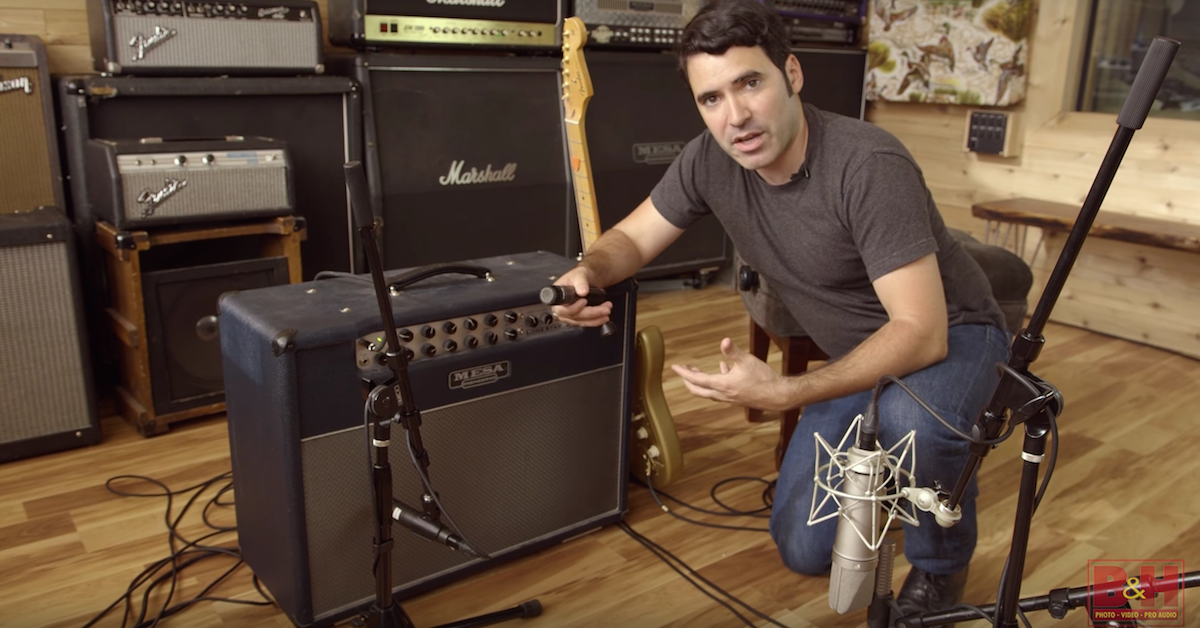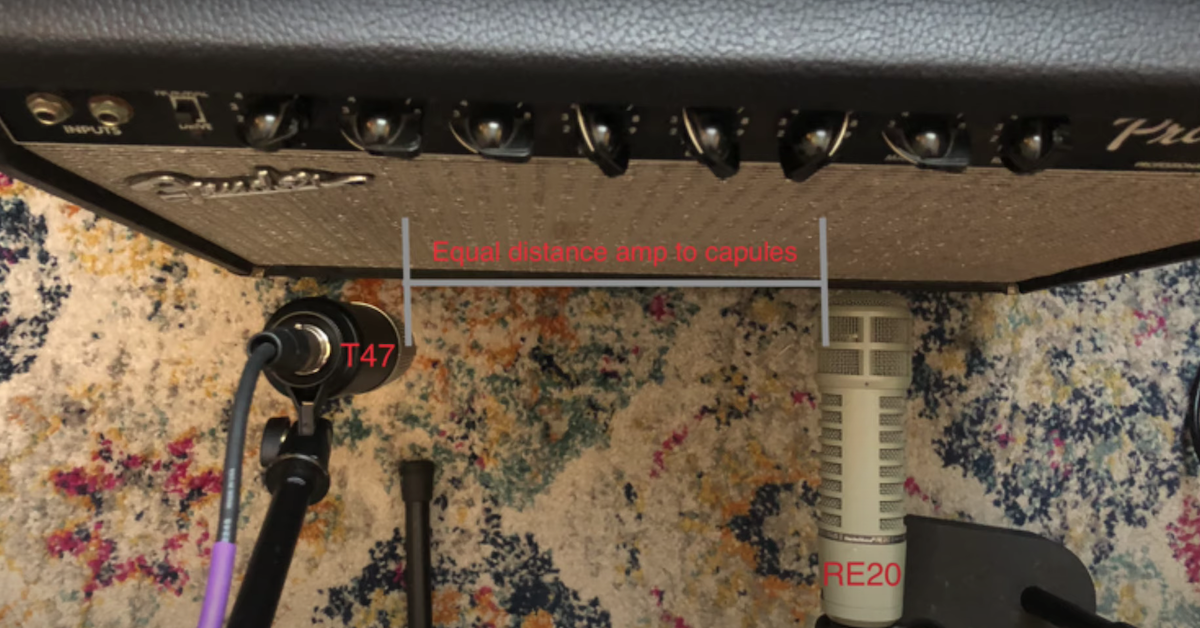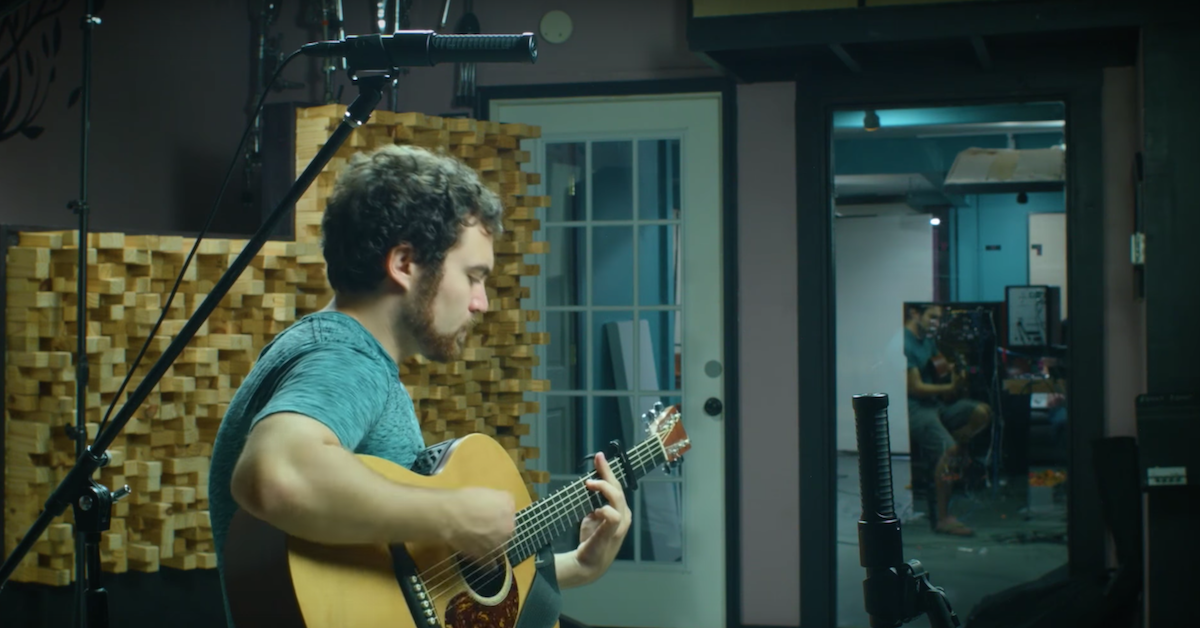9 Mics for Recording Electric Guitar (+ Audio Examples)
Article Content
Stocking up your studio mic closet? There are so many options it can make you delirious. You want everything. It seems like you need to have every possible option covered.
This cover-all-the-bases mindset makes sense for a commercial studio but not necessarily for home or project studios. In a commercial studio, you never know what’s going to walk in the door. Having a range of mics can accommodate for large setups and surprises.
But with home and project studios, we aren’t surprised as much or likely to have full band setups — so this means we can curate our collection and choose mics that cover the range of what we’ll be recording.
This can still leave you with almost too many options. So let’s try to bring some clarity. I’m going to break it down into three categories of guitar amp mics, and within each category, I’ll provide three budget options.
Let’s get started.
Condenser Microphones
The right condenser mic can sound fabulous on a guitar amp. The wrong condenser can sound thin and sharp.
The market is flooded with cheap condenser mics, most of which sound … well, cheap. The marketing departments at these companies will paint a different picture in their ads and content. But I have really struggled to get a great sound with most of them.
Blue Baby Bottle
That said, I’ve had the most luck with Blue Baby Bottle. I was honestly surprised by its sound quality. It’s a large diaphragm microphone that retails for $399. I tend to prefer large to small diaphragm mics on guitar cabs — but there are no rules.
The Baby Bottle doesn’t sound like a $4,000 mic, nor does it sound like a $399 mic. It’s a solid-state mic, which means no tubes. It’s very clean but not sterile.
I tend to use the Baby Bottle more as a close mic. I find the more back-in-the-room it is, the thinner it sounds.
Soyuz Bomblet
If you’re willing to spend a bit more, consider the Soyuz Bomblet. The Bomblet happens to be my favorite solid-state condenser mic for guitar amps. It’s a very clean mic but it has body and personality. It captures the guitar’s full range and doesn’t sound boring.
It also responds really well to EQ. That’s one thing I notice about cheaper mics — they don’t respond so well to EQ. I find myself needing to tweak problem frequencies on the Baby Bottle more and still not being satisfied.
The Bomblet takes EQ adjustments and sounds flattering. I use it in a variety of positions: close up on the grill, a few feet back, and as a room mic. It does it all and retains depth and clarity.
The Bomblet runs around $1,200. But with that extra cost comes a mic that also works incredibly well in other applications. I use it as the main vocal mic for Abby Ahmad, as well as on acoustic guitars, bass amps, classical guitar, mandolin and bass drum. It’s the Swiss Army Knife of mics.
I actually prefer the Bomblet to other, more expensive solid-state mics.
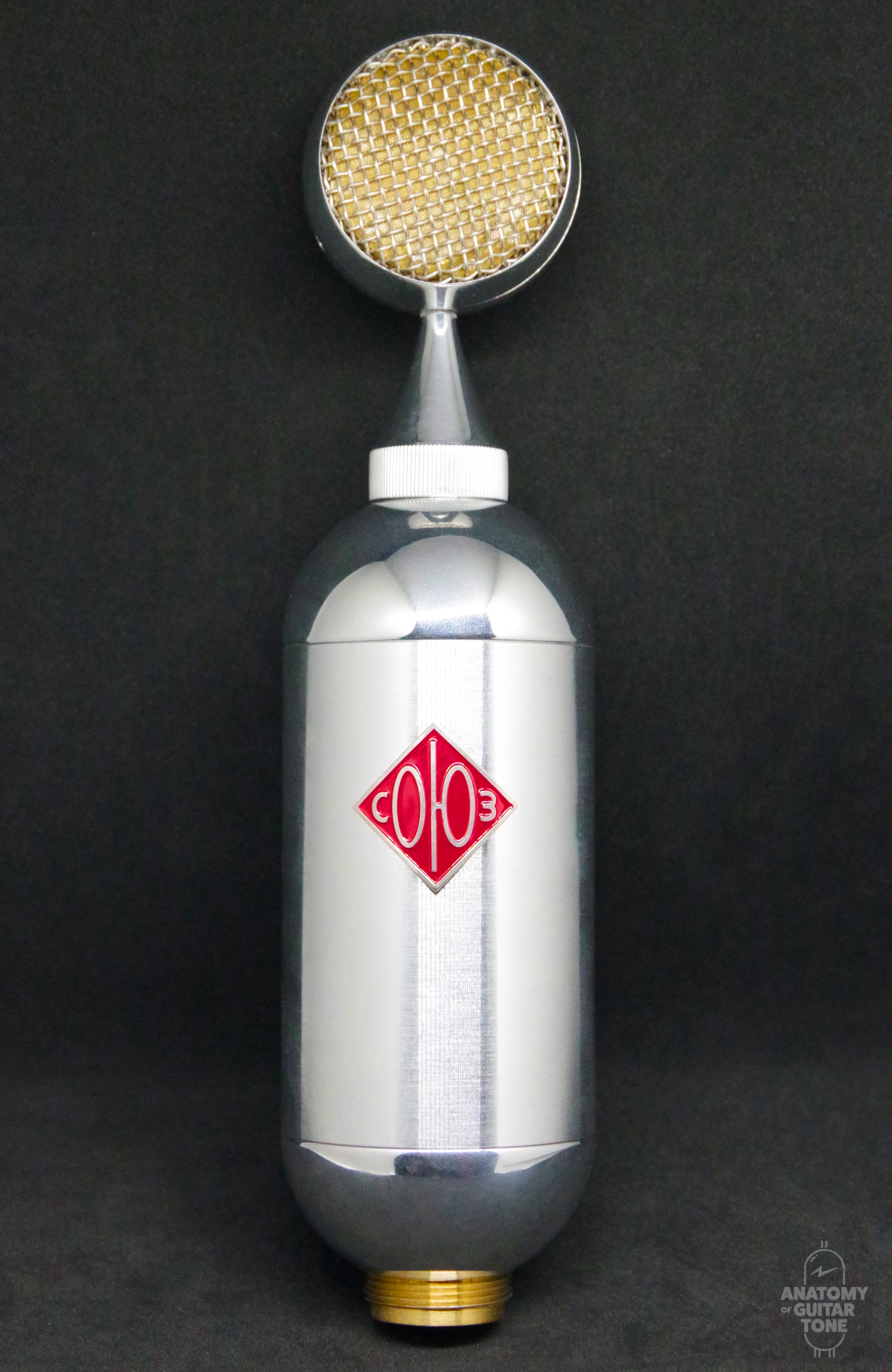
Soyuz Bomblet
Neumann U87
The Neumann U87 is a classic, solid-state mic. But just because it has a classic name doesn’t mean it’s the best. There isn’t anything wrong with the U87, it’s a fine mic, but at $3,200 — it’s a steep investment.
You’ve heard this mic on countless recordings. It’s a workhorse. Is it radically better than the Soyuz Bomblet? I don’t think so. I actually reach for the Bomblet more and the U87 is more than double the price of the Bomblet.
If money is burning a hole in your pocket, go for it! But I think there may be better ways to spend your money. That said, the U87 works in many applications.
I’ve focused on solid-state mics for condensers. In my opinion, to get a really good tube mic sound, you have to spend some real money. Cheap tube mics just don’t do it for me. I’ve also tried to focus on versatility. I absolutely love tube mics, but I find they work in fewer applications.
If you’re stocking up your project/home studio, it’s best to buy mics that can cover a lot of ground and cover it well, versus buying several specialized mics.
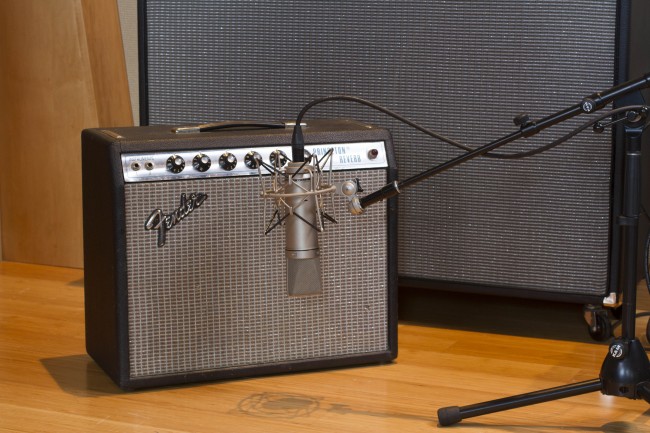
Neumann U87
Ribbon Microphones
I’m a huge fan of ribbon mics on guitar amps and acoustic guitars. They sound very natural to me, even though some consider them colored. I never know what “colored” means anyway, because any mic or preamp is going to add flavor or “color” to a guitar’s tone. Even those branded “clean” or “natural.”
Beyerdynamic M160
So many great guitar sounds have been recorded with ribbon mics. Jimi Hendrix’s classic sounds were recorded with a Beyerdynamic M160 ribbon mic. It’s a hypercardioid mic, which is unique in the ribbon category.
This fantastic sounding mic costs about $699 — which is a midrange-cost ribbon mic. It has a deep sound with great low-mids and body.
I’ve used the M160 on many guitar cabs. As always, be careful how closely you place it and how loud you play.
Speakers move the surrounding air, which can damage ribbon mics at high decibels. If you crank a Marshall 100-watt head into a 4×12 cab, you’ll damage the ribbon in the mic if placed right on the grill. Move the mic back far enough to protect it or use a different mic. This could be anywhere from 1 to 3 feet away from the speaker. Be very cautious of levels above 105 dB with a close mic. I would start at one foot away.
Sometimes I move the mic back and place a pop filter in front of the mic to block any air movement. Use care when handling ribbon mics. They sound amazing, but they’re fragile.
The M160 also sounds great on acoustic guitars, drum overheads, violin and horns (again, watch that airflow).
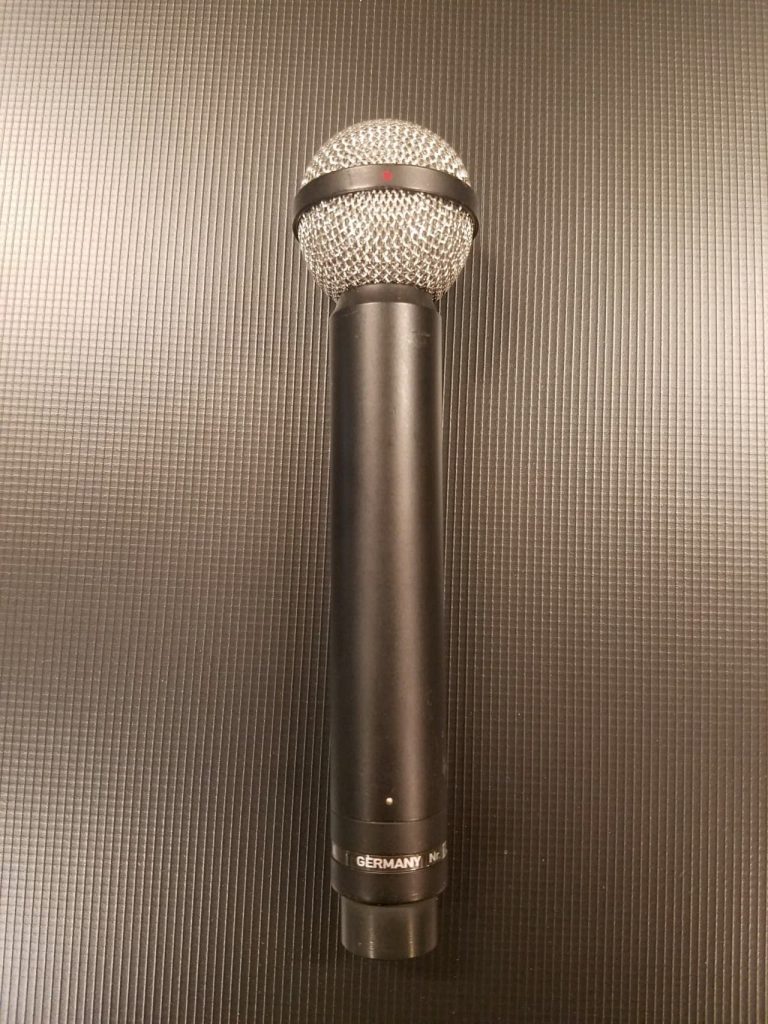
Beyerdynamic M160
Cascade Fat Head II
The Fat Head II ribbon mic is a really nice-sounding, affordable option. It’s not as rich or quiet as the M160, but at $449, it’s an affordable entry to the world of ribbon mics. I dig mine on guitar amps and drum overheads. It’s a very pleasing sound.
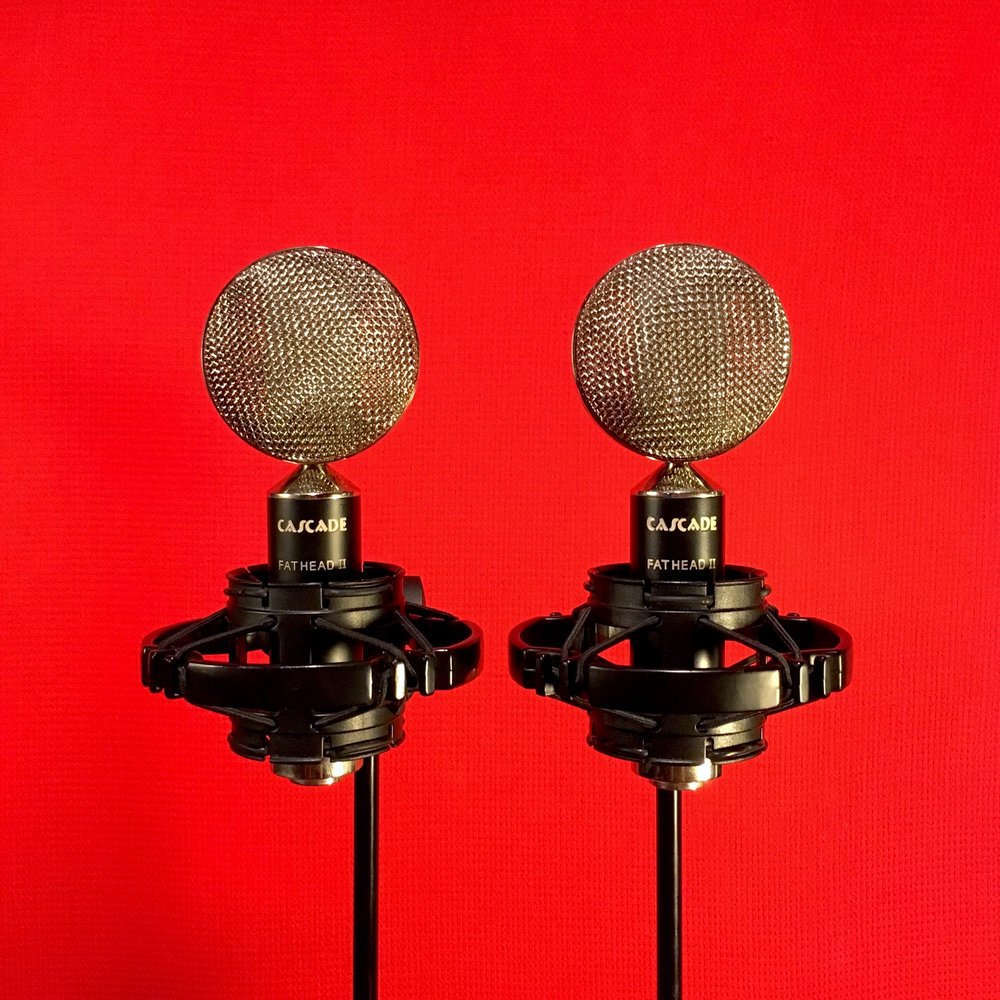
Cascade Fathead II
AEA R84A
AEA makes my favorite ribbon mics. They have a very traditional sound with some modern features. The R84A is an active ribbon mic which gives the mic more output, resulting in a much quieter mic.
Quietly fingerpicked acoustic guitars will be recorded as cleanly as through a condenser mic. Except it will sound like a ribbon!
I love the R84A on guitar amps as a close mic, a distant mic, and everything in between. It’s almost always on my amp, along with the Bomblet. It sounds warm yet articulate. With the R84A in front, my amp sounds like my amp.
It runs around $1,300 and is worth every penny. I’ve also used the R84A as a drum overhead, on strings, horns, acoustic guitar, vocals, piano and double bass.
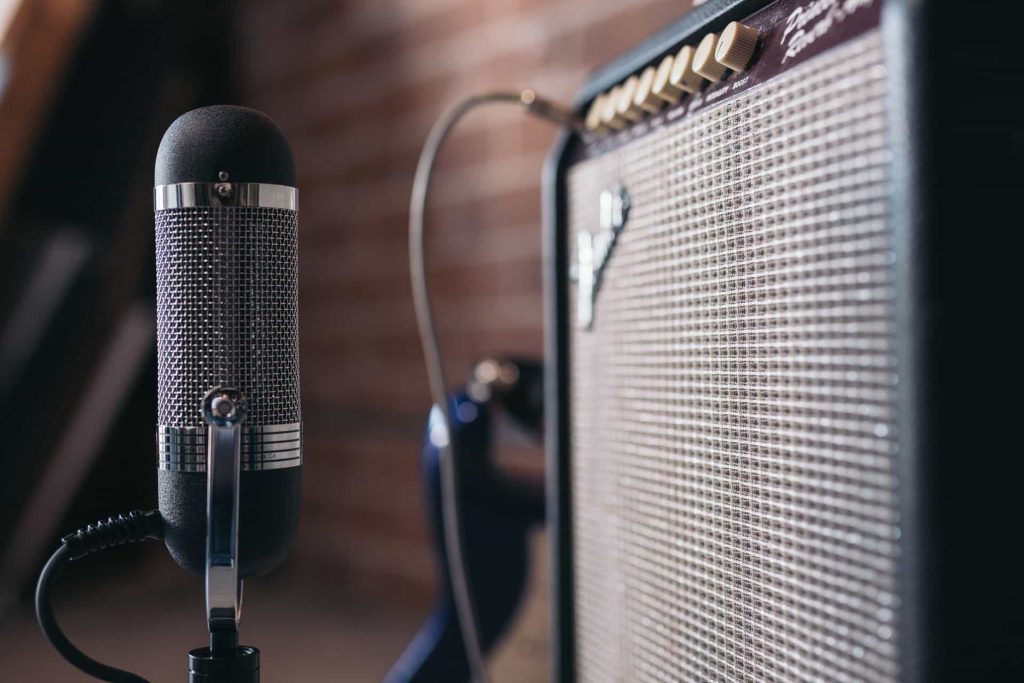
AEA R84
Dynamic Microphones
A lot of people still consider dynamic mics to be the industry standard for guitar amps. They were kind of a thing — perhaps because of the high sound pressure levels people were recording at. Or maybe they just came into fashion.
I’m going to be controversial and say that dynamic mics aren’t my favorite on guitar amps. Whew, I said it. I’m probably going to have to move now and change my name.
Remember, though, context is everything. For example, hard rock guitars can really like SM57s.
Shure SM57
The SM57 is probably the most popular mic associated with guitar amps … and the worst (here comes that hate mail). They’re cheap, very directional, and indestructible, all of which more than likely accounts for their popularity and why they’ve flooded recording studios.
I’m not a huge fan. There is nothing wrong with the SM57 — they’re built quite well and have a distinct sound. It’s just not a sound that I prefer, but everything has exceptions.
On highly distorted guitars, I like to blend a Shure SM57 with a ribbon or condenser mic. I rarely use the SM57 on its own. But when blended with another mic, it can really complement the tone.
The SM57 is very rich in the upper-midrange. I might even say exaggerated. Blending two mics with very different EQ personalities can yield a larger tone.
Some use the SM57 on snare drums and toms with great success as well.
For me, the SM57 is a straight-up-on-the-grill kinda sound. It’s a little harsh to my ears. That harshness can make it cut in a mix. But I rarely start here.
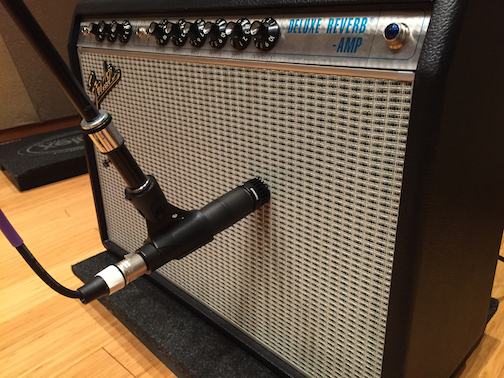
Shure SM57
Sennheiser e906
There are other dynamic mic options. I find the Sennheiser e906 mic more flattering and natural than the SM57. The e906 isn’t as hyped in the upper mids and can take high sound pressure levels. It’s also more durable than a ribbon or condenser mic.
The e906 is less directional than the SM57. Its cardioid pattern allows a bit of sound from the rear of the mic. This gives the sound more space.
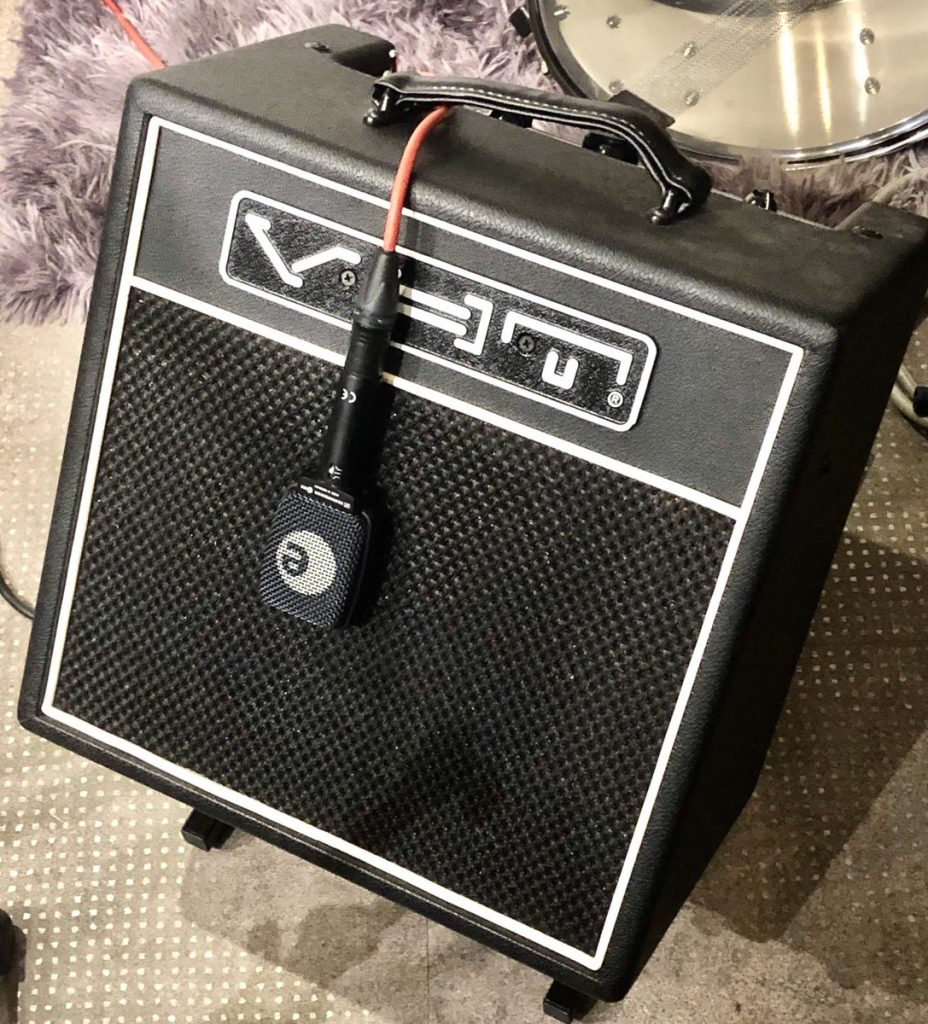
Sennheiser e906
Electro-Voice RE20
The RE20 is usually thought of as a broadcast mic for radio. But it happens to sound great on guitar amplifiers. It rejects a lot of sound from the sides of the mic, making it very directional and great when there is a lot of room bleed.
To my ears, the EQ curve of the RE20 is more flattering than the SM57. Like the e906, the RE20 can handle high SPLs. Wink-wink, nod-nod … go get those Marshall stacks!
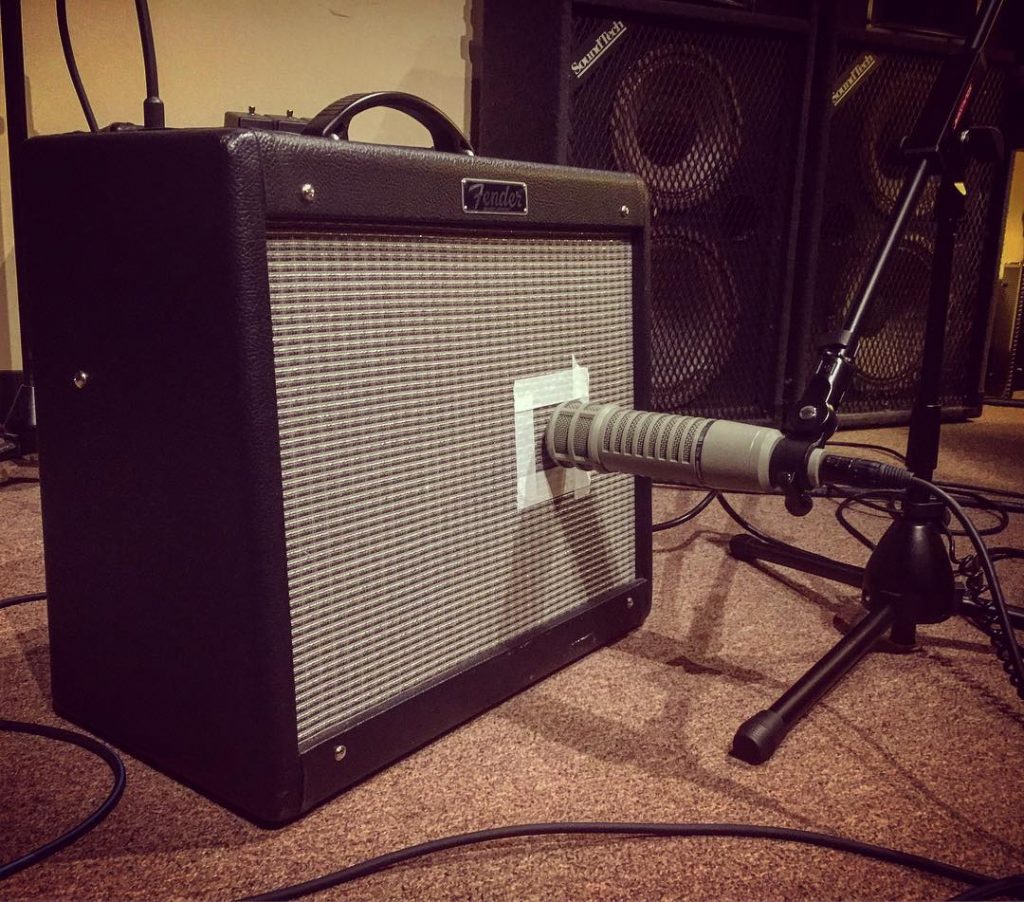
Electro-Voice RE20
Final word
I’ve created some of my favorite guitar sounds using these mics. Each one also doubles on other instruments so you don’t need to own all of these mics. I would pick one from each category to get started: one condenser, one ribbon, and one dynamic.
But if you’ll be recording stereo guitar, you may need to buy two of your favorite mic. I don’t record a lot of stereo guitar, but I have two SM57s just in case.
I generally prefer mono guitar or a multi-miked mono guitar amp. That doesn’t mean there isn’t a place for stereo guitar. That’s more specific though, and not the “standard”— if there is a standard.
Let’s listen to some guitar sounds I created with various mics run into my UA Apollo.
Example 1:
Gear Used: A rock/blues vibe using a Gibson ES-335 with ‘50s wiring and Florance pickups into a Henry Amps Bad Hombre.
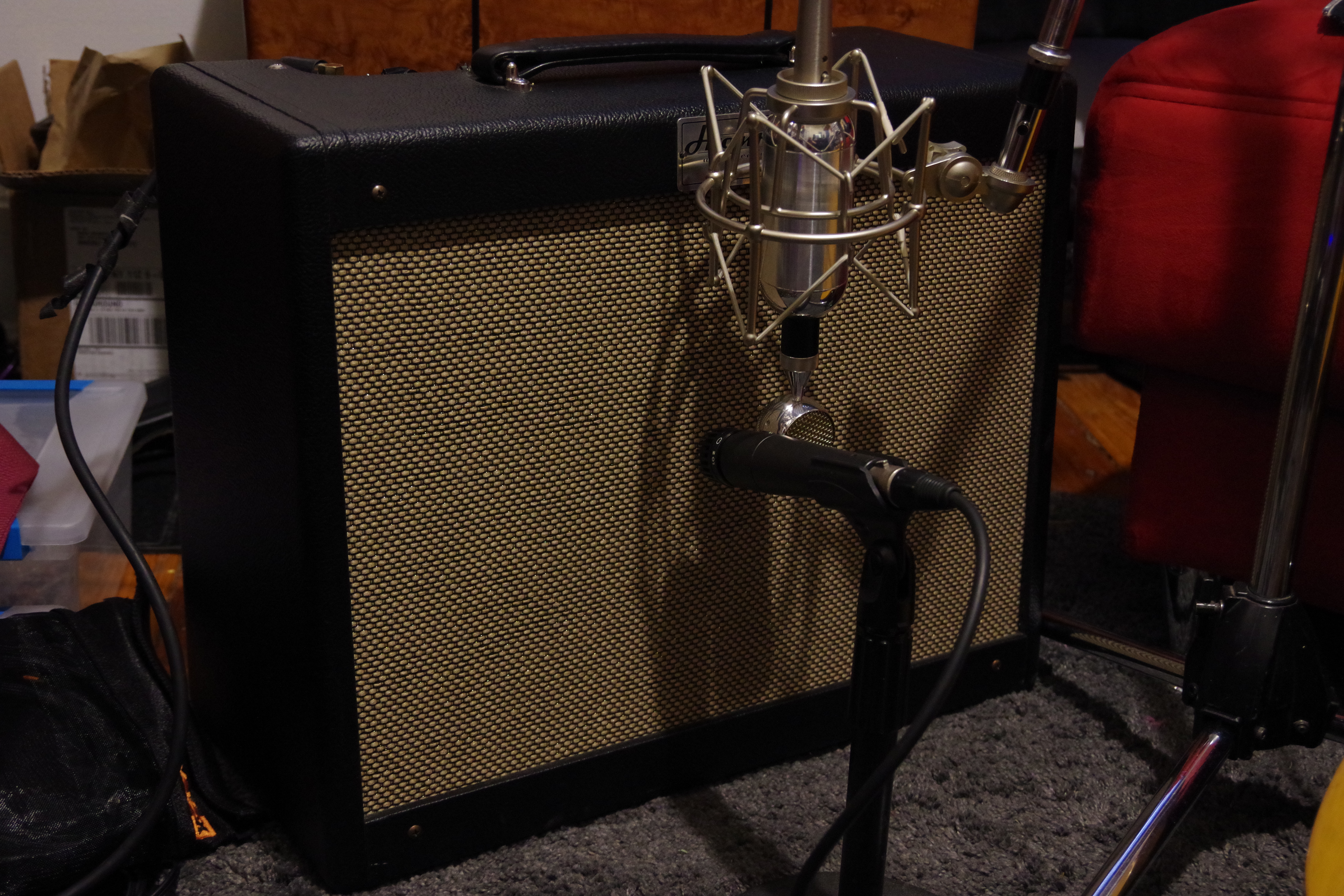
Henry Amps with Shure SM57 and Soyuz Bomblet
Soyuz Bomblet
Shure SM57
Example 2:
Gear Used: A classic rock riff using a Gibson Les Paul Standard with ’50s wiring and Florance pickups into a LIC MKI Tone Bender into Henry Amps Bad Hombre.
Bomblet
SM57
Example 3:
Gear Used: A rock vibe using the Les Paul into a Keeley D&M Drive into the Bad Hombre.
Soyuz Bomblet
Shure SM57
Example 4:
Gear Used: More of a pop vibe with a Danelectro DC59 into a Kord SDD-3000 delay into a Vox AC15.
Blue Baby Bottle
AEA R84A
Shure SM57
Example 5:
Gear Used: A country-ish vibe with a Telecaster loaded with Florance pickups into a Korg SDD-3000 delay into a Effectrode Mercury fuzz a tweed Victoria 518 (Champ).
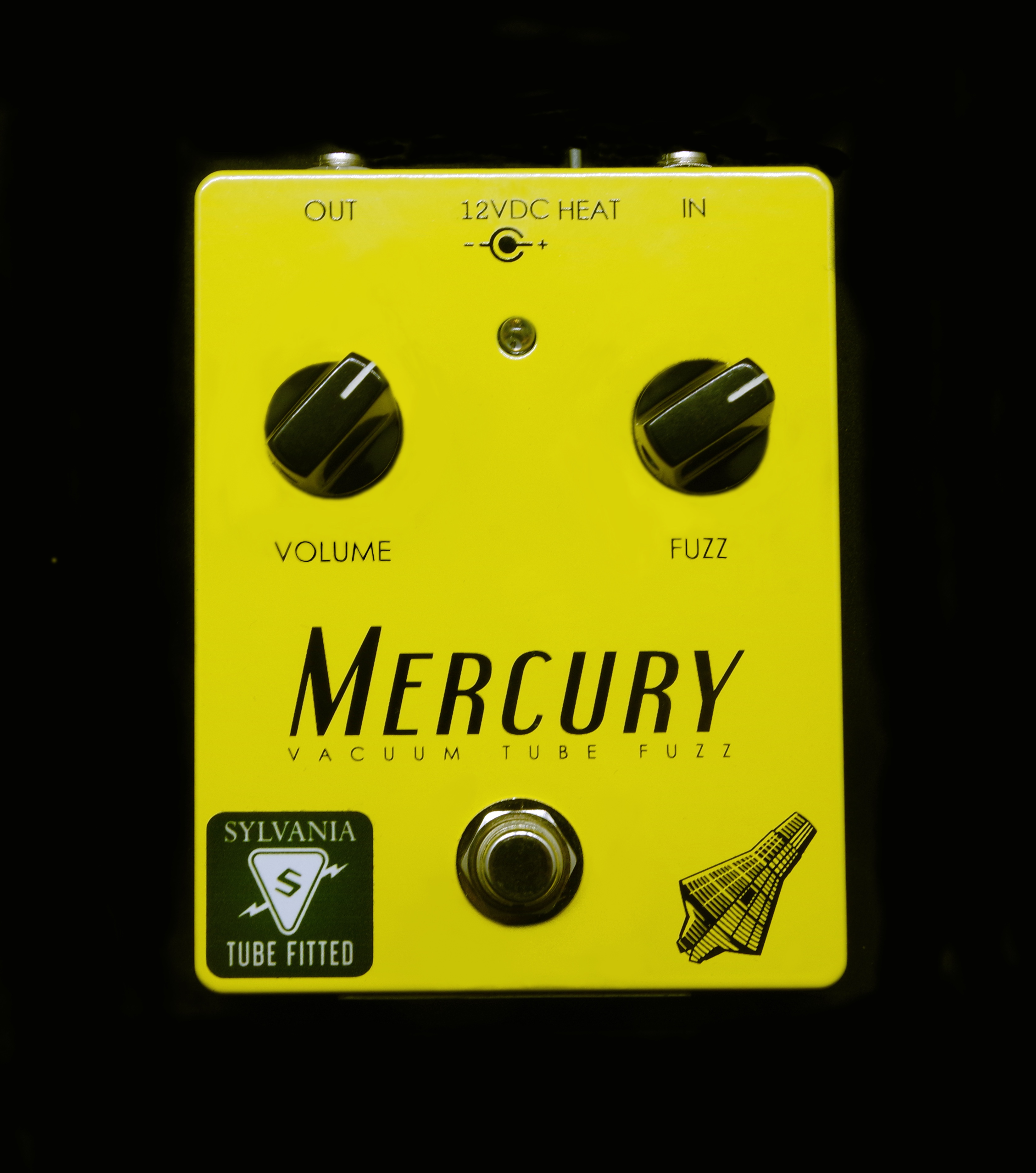
Effectrode Mercury Fuzz
AEA R84A
Example 6:
Gear Used: A descending blues-rock riff using a Fender Stratocaster loaded with FSC Instruments ’59s pickups into an Effectrode Mercury Tube Fuzz into an Effectrode Tube Drive into a Headstrong Lil’ King Reverb amp.
AEA R84A
Example 7:
Gear Used: A ’60s electric folk riff using a Rickenbacker 360 12-string with Gemini Pickups into a Vox AC15.
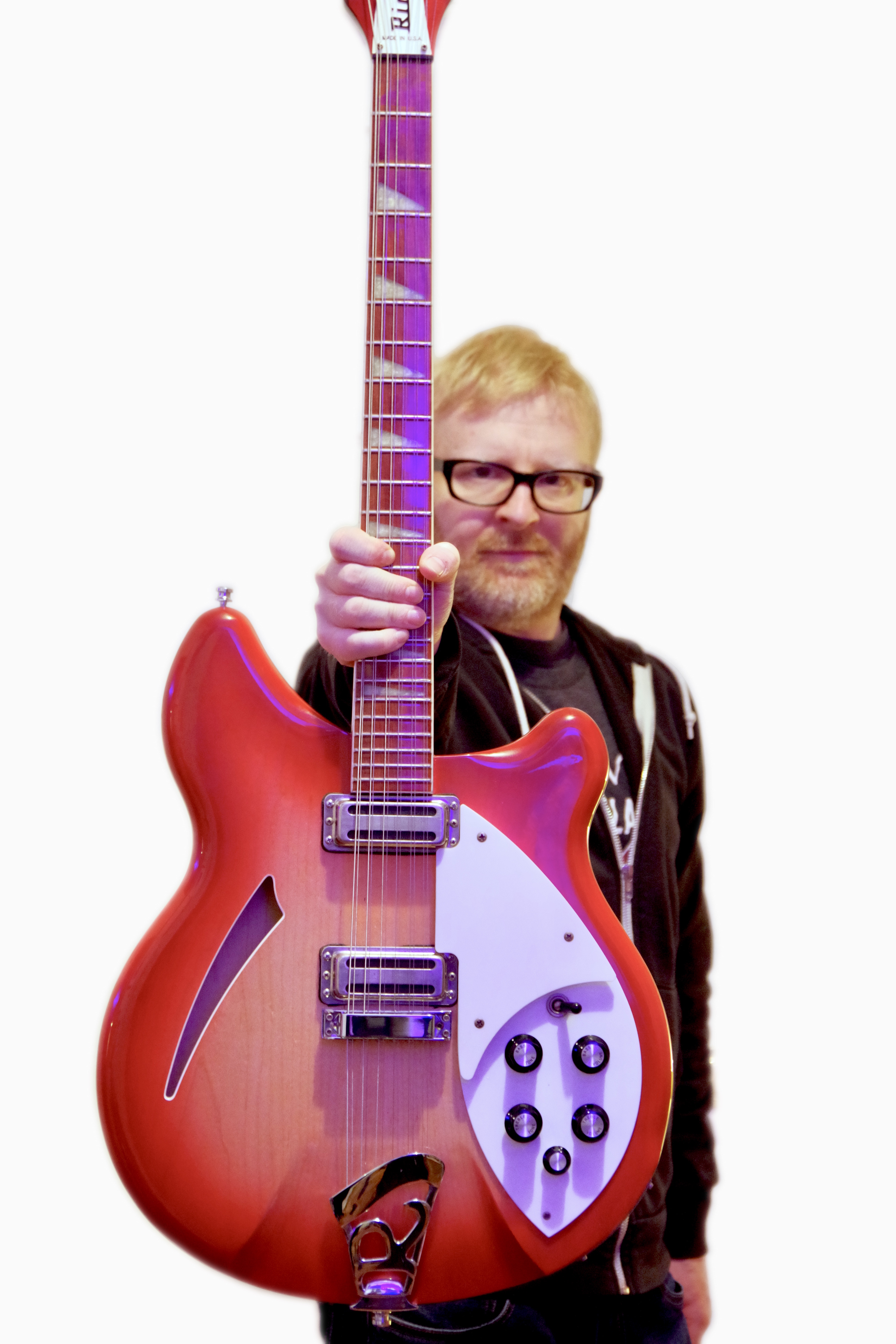
Rickenbacker 360 12 string
Soyuz Bomblet
AEA R84A
Example 8:
Gear Used: The same Rickenbacker with 1963 wiring running into an Analog Man CompROSSor into a Headstrong Lil’ King Reverb.
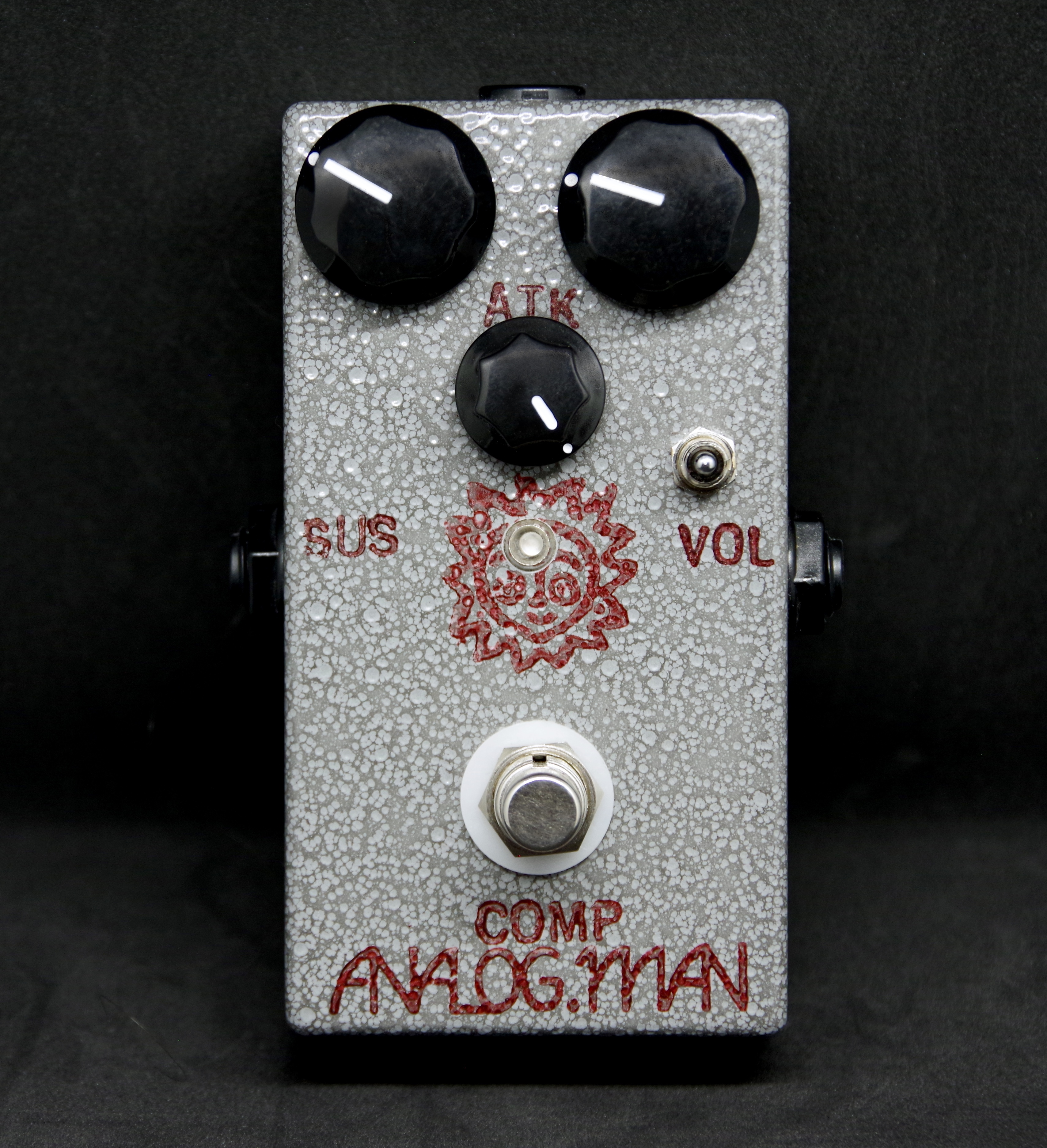
Analog Man compressor with Ryck toggle
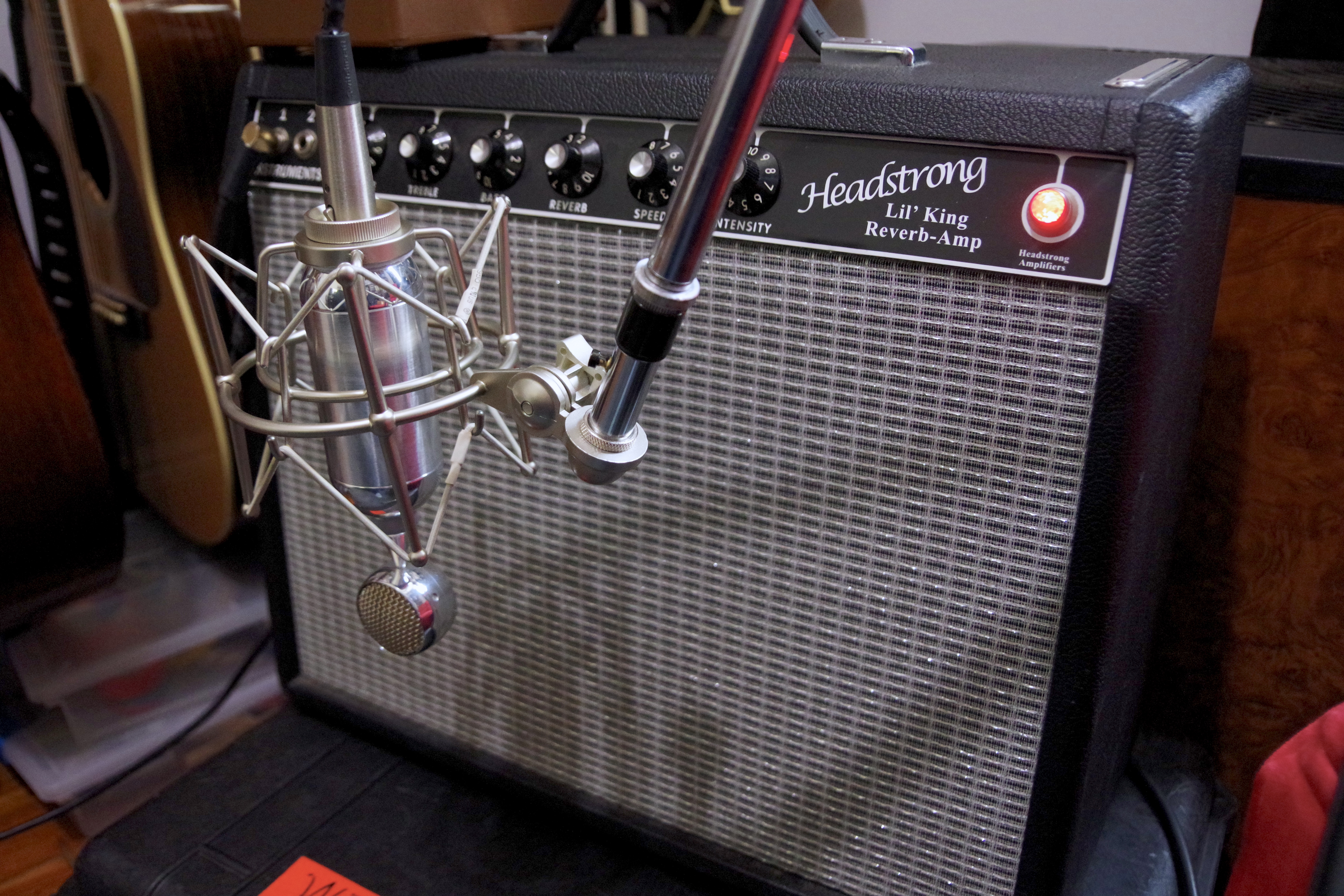
Headstrong Lil’ King with Soyuz Bomblet
Soyuz Bomblet
Example 9:
Gear Used: A 1980s-inspired lead part using the Les Paul into the Archer Ikon into a Vox AC15.
AEA R84A



